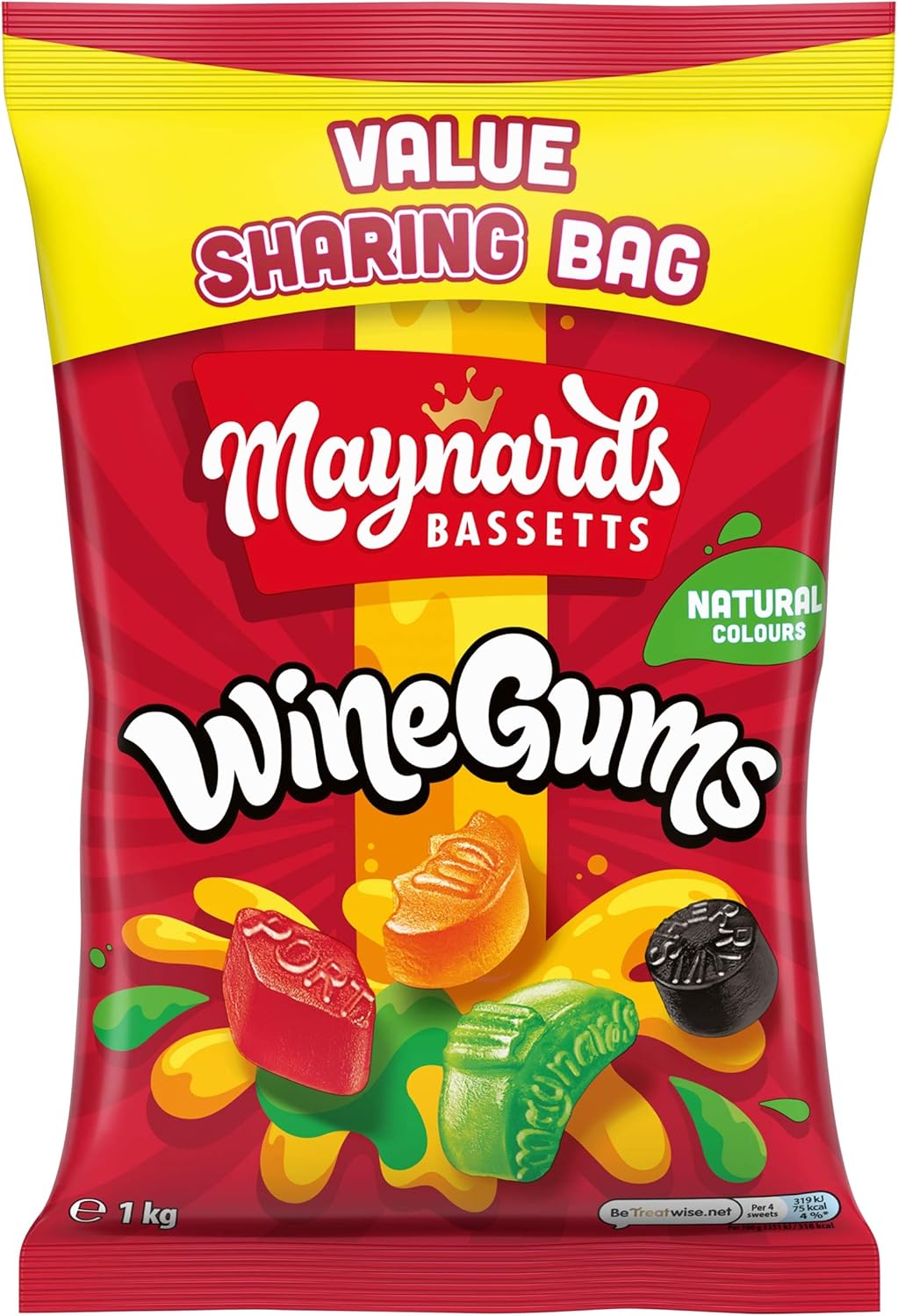About this deal
Find sources: "Maynards"– news · newspapers · books · scholar · JSTOR ( October 2019) ( Learn how and when to remove this template message) These DIY homemade wine gummies are a great way to enjoy your favorite wine while satisfying your sweet tooth! Made with just a few simple ingredients, they are also a fun and easy project to make with friends. Simply combine your favorite wine, gelatin, and sugar in a saucepan and heat until the gelatin has dissolved. Then pour the mixture into molds or silicone baking cups and let it set in the refrigerator. Once set, enjoy your wine gummies as is or coat them in your favorite candy coating for an extra-special treat!
You can satisfy your sweet tooth by pairing our veggie versions of classic fruity treats like Maynards Wine Gums with your favorite beverage. The gums are made with glucose syrup, sugar, modified corn starch, gelatin, acetic acid, mineral oil, carnauba wax, and natural and artificial flavors, and they come in a resealable pouch to preserve freshness, and they are just as chewy and juicy as their meat counterparts. It’s very common for our fans to love to see veggie versions of our Jelly Babies, Joan. Could you please make some veggie wine gums? We are excited to bring these sweet treats to market because our fans want a sweet treat that’s both classic and delicious, and these gums will be an enjoyable treat for our customers. What Gelatine Is In Maynards Wine Gums? Grapes, as opposed to wine gums, have a jelly-like consistency and are softer. If you prefer a more intense flavor, look for fruit pastilles. Jelly beans, which are smaller and more difficult, can be eaten by people of all ages because they taste intense and can be enjoyed by both young and old. Wine gums are a popular type of confection in the United Kingdom, and they’re delicious. These little treats are made from glucose syrup, sugar, corn starch, gelatin, acetic acid, carnauba wax, mineral oil, and natural and artificial flavors, and they’re ideal for drinking without having to worry about alcohol. Wine Gums: A History
Despite the fact that the flavours often sport names like “port”, “sherry”, and “gin”, wine gums actually aren’t made with any alcohol at all. In fact, the creator was from a strict Methodist household, and his father almost fired him when he’d heard he was selling something with ‘wine’ in the name. This article needs additional citations for verification. Please help improve this article by adding citations to reliable sources. Unsourced material may be challenged and removed.
Unlike liquorice, wine gum has a more abrupt start. The baby steps were taken in 1880. The Englishman Charles Riley Maynard started his business by making confectionery with his brother, Tom, in a small kitchen in Stamford Hill, London.Charles’ wife, Sarah Ann, served the shop’s customers. It gained popularity and Maynard started a company in 1896.Maynard’s Wine Gums were introduced in 1909 by Maynard’s son, Charles Gordon Maynard. The story goes that the old Maynard was close to firing his son, when he invented the concept of wine gums. It took a long time and much perseverance to persuade his father, a conservative Christian, that no wine was used in making the jellies. If you are looking for a beverage that provides both dental and health benefits, you can’t go wrong with wine. Polyphenols in red wine have been shown to help prevent tooth decay and bacteria growth. Furthermore, wine is high in antioxidants, which can help protect your body from free radical damage. If you’re looking for something that can perform a variety of functions, it’s a good idea to go with wine. Why Do They Call It Wine Gums? The 140 portfolio of sweet shops set-up as the company expanded were sold in 1985. [2] and the company was acquired by Cadbury in 1988. The brand merged in 1990 with the Tottenham liquorice mill Bassett's, and Trebor as well as sweet manufacture of the three brands moved to Sheffield in 1991. By 2002 worldwide sales of Maynards Wine Gums were forty million pounds sterling per year. Around the turn of the century, Charles Gordon, heir to the confectionery firm, suggested to his father that the company should diversify into making "wine gums". Nevertheless, Charles Riley, a strictly teetotal Methodist, gradually came round to the idea when his son persuaded him that the new sweets would not contain alcohol. Maynards Wine Gums were introduced in 1909.Making fruit gums is actually pretty simple. All you need is some fruit puree, gelatin, sugar, and water. You mix the fruit puree and gelatin together and then heat it until the gelatin is dissolved. Then you add the sugar and water and mix everything together until it’s well combined. Finally, you pour the mixture into a mold and let it set. Once it’s set, you can cut it into pieces and enjoy! Why Are Wine Gums Called Wine Gums There are numerous ingredients to choose from. The ingredients include glucose syrup, sugar, modified corn starch, gelatin, acetic acid, carnauba wax, mineral oil, natural flavors, and colors (as of May 2010), in addition to Tartrazine. The ingredients in this dish are not alcoholic beverages. A wine gums candy is a type of candy made of wine. They are healthier alternatives to other types of candy because they contain less fat. Although wine gums contain no alcohol or fat, they are high in sugar. Are Wine Gums A Laxative?
 Great Deal
Great Deal 